 If you or your children have little white spots on your teeth, you may be wondering what they are and if they’re dangerous. Those little spots are called hypomineralization, and while they all appear in the same form, they don’t all come from the same place or pose the same risk. But don’t panic! They’re usually not dangerous and are often correctable with proper care.
If you or your children have little white spots on your teeth, you may be wondering what they are and if they’re dangerous. Those little spots are called hypomineralization, and while they all appear in the same form, they don’t all come from the same place or pose the same risk. But don’t panic! They’re usually not dangerous and are often correctable with proper care.
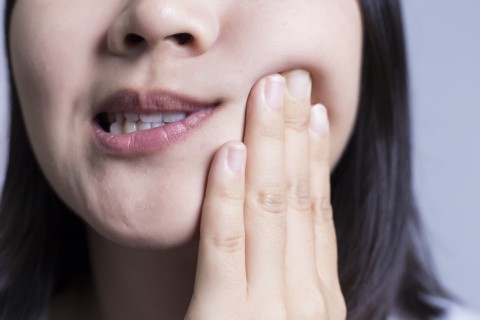 For an estimated 1 in 8 Americans, sensitive teeth are a real problem. While the condition itself has many causes, according to a 2013 study in the Journal of the American Dental Association, it most frequently affects people between the ages of 18-44, with women nearly twice as likely to experience sensitivity as men. But there may be good news on the way for sufferers of sensitive teeth, and it’s got ties to a very unlikely source: rust remover. Dr. Gary Lederman of Bellmore, New York has seen this in his patients.
For an estimated 1 in 8 Americans, sensitive teeth are a real problem. While the condition itself has many causes, according to a 2013 study in the Journal of the American Dental Association, it most frequently affects people between the ages of 18-44, with women nearly twice as likely to experience sensitivity as men. But there may be good news on the way for sufferers of sensitive teeth, and it’s got ties to a very unlikely source: rust remover. Dr. Gary Lederman of Bellmore, New York has seen this in his patients.
If you’re at all familiar with that can rust remover, you may have heard of an ingredient called potassium oxalate. The compound, which can also be used to bleach wood and textiles, and is also used as a precipitating agent in metal processing, is now being tested for use in protecting sensitive teeth.
 A few years ago, it seemed like you couldn’t go anywhere or read anything without hearing about "oil pulling"- the trend of swishing coconut oil around in your mouth for 20 minutes- supposedly to help purge toxins from your mouth and whiten your teeth. The trend seemed to die down for a while, but it’s starting to come back again thanks to social media sites like Instagram, which are chock-full of photos celebrities and beauty bloggers with perfect, gleaming smiles- many of whom credit those smiles to oil pulling. But is oil pulling really the miracle whitener it claims to be- and more importantly, is it safe? Here’s everything you need to know about this resurging trend.
A few years ago, it seemed like you couldn’t go anywhere or read anything without hearing about "oil pulling"- the trend of swishing coconut oil around in your mouth for 20 minutes- supposedly to help purge toxins from your mouth and whiten your teeth. The trend seemed to die down for a while, but it’s starting to come back again thanks to social media sites like Instagram, which are chock-full of photos celebrities and beauty bloggers with perfect, gleaming smiles- many of whom credit those smiles to oil pulling. But is oil pulling really the miracle whitener it claims to be- and more importantly, is it safe? Here’s everything you need to know about this resurging trend.
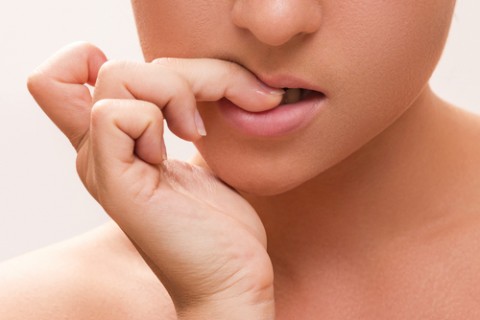 What was once referred to as simply a bad habit, nail biting or onychophagy is now classified as an oral compulsive habit – that is, a repeated movement of the mouth along the lines of Obsessive-Compulsive Disorder, or OCD. Nail biting is most commonly found in teenagers- with an estimated 45% of all teens biting their nails at one point or another. Thankfully, this dangerous habit generally stops after adolescence, but plenty of adults continue to bite their nails long after adolescence. While it’s not known exactly what causes people to start biting their nails, it is believed that nail biting begins during times of emotional distress as a coping mechanism, and either stops on its own or continues into adulthood. But while we know nail biting is terrible for your nails, did you also know that nail biting is bad for your teeth, too?
What was once referred to as simply a bad habit, nail biting or onychophagy is now classified as an oral compulsive habit – that is, a repeated movement of the mouth along the lines of Obsessive-Compulsive Disorder, or OCD. Nail biting is most commonly found in teenagers- with an estimated 45% of all teens biting their nails at one point or another. Thankfully, this dangerous habit generally stops after adolescence, but plenty of adults continue to bite their nails long after adolescence. While it’s not known exactly what causes people to start biting their nails, it is believed that nail biting begins during times of emotional distress as a coping mechanism, and either stops on its own or continues into adulthood. But while we know nail biting is terrible for your nails, did you also know that nail biting is bad for your teeth, too?
 You may have heard the term ‘neuromuscular dentistry’ used around the practice before, or read about neuromuscular dentistry here on our blog. Neuromuscular dentistry is dentistry with a purpose, and that purpose is to realign the teeth, joints, muscles, and bones of the jaw to an optimal position. By doing this, we can reduce or cure the symptoms of TMJ disorder, eliminating the chronic pain experienced by many TMJ sufferers. Similar to neuromuscular dentistry is the field of neuromuscular orthodontics. Neuromuscular orthodontics work to relax the positioning of the muscles of the upper and lower jaws, which in turn allows for optimal shaping and positioning of each jaw. This translates to greater comfort for the patient, and better, longer lasting results following orthodontic treatment.
You may have heard the term ‘neuromuscular dentistry’ used around the practice before, or read about neuromuscular dentistry here on our blog. Neuromuscular dentistry is dentistry with a purpose, and that purpose is to realign the teeth, joints, muscles, and bones of the jaw to an optimal position. By doing this, we can reduce or cure the symptoms of TMJ disorder, eliminating the chronic pain experienced by many TMJ sufferers. Similar to neuromuscular dentistry is the field of neuromuscular orthodontics. Neuromuscular orthodontics work to relax the positioning of the muscles of the upper and lower jaws, which in turn allows for optimal shaping and positioning of each jaw. This translates to greater comfort for the patient, and better, longer lasting results following orthodontic treatment.
While in many ways, neuromuscular orthodontics is quite similar to traditional orthodontics, it also differs in some major ways. While both branches of orthodontics use similar appliances and have the same end goal in mind (to straighten the teeth and perfect the smile) how they get there is what sets them apart. In regular orthodontics, more emphasis is placed on improvising as the treatment progresses, with only a general idea of how to get there. With neuromuscular orthodontics, we focus more on crafting a precise treatment plan that maps out exactly what we want to do for treatment, and exactly what we want the outcome to be.
Neuromuscular orthodontics is better for the patient because it not only maps out a perfectly tailored treatment plan, but it focuses on the best way to achieve the patient’s optimal tooth positioning. With traditional orthodontics, the goal is a beautiful smile – but it often seems like there should be a disclaimer that says ‘a beautiful smile at any cost’- with that cost usually being a great deal of pain. On the other hand, neuromuscular orthodontics works with your body to not just create a beautiful smile, but to position the teeth in such a way that the patient won’t experience the discomfort that is often experienced in traditional orthodontics. This pain comes from forcing the teeth and jaw into an unnatural positon, but with neuromuscular orthodontics, it’s not an issue because we’ve already relaxed the muscles of the upper and lower jaw prior to the orthodontic appliances being placed. This also means your body will be less likely to resist the treatment, which translates to a greater level of comfort before, during, and after treatment. This also means you’ll not only be less likely to suffer from TMJ symptoms, but your orthodontic treatment results will last longer, because that tension in your joints, muscles, and bones won’t be fighting the new positioning and trying to put the teeth and palate back to their original position.
But neuromuscular orthodontics isn’t just for adults- it can benefit anyone, especially children. Children are generally easier to treat with orthodontic procedures because in most cases, the chronic problems associated with a misaligned bite have not yet had time to manifest. But neuromuscular orthodontics is still extremely beneficial to children, because their mouths are still growing. Neuromuscular orthodontics takes this growth into account when developing a treatment plan. Using neuromuscular dentistry, we can actually predict and then ‘map out’ the mouth’s future growth. From there, we can design treatment plan that will estimate where we can expect space, movement, and expansion of the patient’s teeth and jaw. This translates to a higher rate of success, because we can align the teeth in such a way that their alignment will not be affected by future growth. With neuromuscular orthodontics, we are essentially "directing the growth" of the teeth in a way that suits the optimal alignment of the mouth- and allowing for the body to influence the development and growth of the bony structures- even in adult patients. If you’re interested in learning more about how neuromuscular orthodontics can benefit you or your family, give Dr. Lederman’s office a call at 516-882-1764.
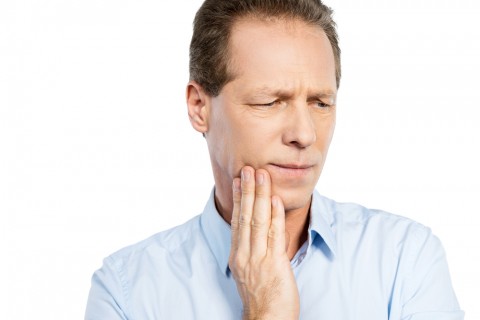 For the thousands of patients faced with the agonizing pain of a dental abscess each year, many are also faced with a common dilemma: should they go through the trouble of having a root canal- or should they cut their losses and skip ahead to a tooth extraction? There are serious pros and cons to each procedure- but they can often be difficult to decide upon when you are in pain and seeking immediate relief. With Root Canal Awareness Week right around the corner (from March 27 to April 2), we spoke to Dr. Gary Lederman of Bellmore, New York about which option is best and how to make a choice for yourself if you’re ever faced with an abscess.
For the thousands of patients faced with the agonizing pain of a dental abscess each year, many are also faced with a common dilemma: should they go through the trouble of having a root canal- or should they cut their losses and skip ahead to a tooth extraction? There are serious pros and cons to each procedure- but they can often be difficult to decide upon when you are in pain and seeking immediate relief. With Root Canal Awareness Week right around the corner (from March 27 to April 2), we spoke to Dr. Gary Lederman of Bellmore, New York about which option is best and how to make a choice for yourself if you’re ever faced with an abscess.
 You may have heard the term "biomimetic" before, but what you may not know is how it relates to dentistry- or why we are so passionate about using a biomimetic dentistry approach with our patients. The word biomimetic literally means ‘imitating (mimesis) life (bios).’ In dentistry, biomimetic dentistry means we take a minimally invasive approach to dental care- an approach which strives to keep as much of the natural tooth intact as possible. We do this by using specialized techniques, tools, and advanced materials to repair damaged teeth- instead of just cutting away the damaged area and hoping whatever we stick to the tooth stays in place and looks realistic. The ultimate goal of our practice, and of biomimetic dentistry as a whole, is to "help our patients keep their teeth for a lifetime... In a condition that’s beautiful and that’s functional."
You may have heard the term "biomimetic" before, but what you may not know is how it relates to dentistry- or why we are so passionate about using a biomimetic dentistry approach with our patients. The word biomimetic literally means ‘imitating (mimesis) life (bios).’ In dentistry, biomimetic dentistry means we take a minimally invasive approach to dental care- an approach which strives to keep as much of the natural tooth intact as possible. We do this by using specialized techniques, tools, and advanced materials to repair damaged teeth- instead of just cutting away the damaged area and hoping whatever we stick to the tooth stays in place and looks realistic. The ultimate goal of our practice, and of biomimetic dentistry as a whole, is to "help our patients keep their teeth for a lifetime... In a condition that’s beautiful and that’s functional."
What makes biomimetic dentistry different is kind of like that old metaphor about optimism versus pessimism, where you are asked whether you see the glass half full or half empty. Traditional methods of dentistry historically have taken a more pessimistic approach, giving little thought to the remaining structure of the tooth, and instead focusing on the repaired section. When you pay more attention to the restoration, it’s a lot like seeing the glass as half empty, because you are not focused on the healthy portion of the tooth. With biomimetic dentistry, we aim to repair the damage to the tooth, not to simply replace the damaged areas, as this essentially creates more damage to the tooth in the process. This is like seeing the glass half-full because we understand the importance of preserving the natural tooth.
In addition to your teeth looking better with biomimetic dentistry, biomimetic dentistry offers two things that many traditional procedures cannot: comfort and predictability. Because biomimetic procedures are minimally invasive, they are naturally less painful than traditional dentistry procedures. Not only that, but most patients experience less tooth sensitivity after the procedure, as well. As for predictability, with biomimetic dentistry, there are no surprises. You already know what your tooth looks like, so restoring that tooth creates no change in the look or feel of your natural tooth. Best of all, because the tooth is repaired, you can feel confident that the health of your teeth is protected- and that you will keep your natural teeth for the rest of your life.
So, given what we know about biomimetic dentistry, why don’t more practices apply biomimetic dentistry principles to their practice? The biomimetic approach is not as easy as traditional dentistry. Biomimetic dentistry requires a lot of skill, patience, and training. It requires the dentist and their staff to look at dentistry under a completely different lens than they were probably initially trained to do. Hopefully, in the future, this will change, and biomimetic dentistry will someday become the standard of care in all practices. But until then, finding a practice which follows the principles of biomimetic care and maintains their focus on the health of the existing tooth instead of the damaged portions of the tooth can be an integral part of enjoying the strength and beauty of your natural teeth for the rest of your life.
If you’d like to learn more about how Dr. Lederman and the biomimetic approach to dentistry can benefit the holistic health of your teeth, give us a call at 516-882-1764 for an appointment.
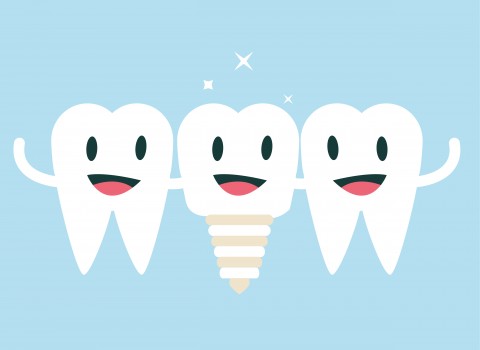 For patients who have lost teeth due to oral infections like periodontitis, a new spin on dental implants could help prevent similar infections from occurring in the future. Researchers at Katholieke Universiteit Leuven (KU Leuven) in Belgium have developed a dental implant with a built-in reservoir that can be filled with antimicrobial drugs to fight or prevent oral infection. We spoke to Dr. Gary Lederman of Bellmore, NY about this exciting new dental technology.
For patients who have lost teeth due to oral infections like periodontitis, a new spin on dental implants could help prevent similar infections from occurring in the future. Researchers at Katholieke Universiteit Leuven (KU Leuven) in Belgium have developed a dental implant with a built-in reservoir that can be filled with antimicrobial drugs to fight or prevent oral infection. We spoke to Dr. Gary Lederman of Bellmore, NY about this exciting new dental technology.
 With winter upon us and many of us planning on jetting off to warmer locales for vacation, a new study published in Science Daily may just add one more item to your pre-travel checklist: a visit to the dentist. If there’s even a chance your vacation could include scuba diving on its itinerary, Dr. Gary Lederman encourages you to have one of your twice-yearly dental exams prior to taking off.
With winter upon us and many of us planning on jetting off to warmer locales for vacation, a new study published in Science Daily may just add one more item to your pre-travel checklist: a visit to the dentist. If there’s even a chance your vacation could include scuba diving on its itinerary, Dr. Gary Lederman encourages you to have one of your twice-yearly dental exams prior to taking off.
According to a recent article published in The British Dental Journal, researchers at the University at Buffalo, in Buffalo, NY found that 41% of scuba divers surveyed reported what they referred to as "dental symptoms" in the water during a dive. These so-called ‘dental symptoms’ ranged from jaw pain to loosened crowns and even cracked teeth!
As your dentist, I have a great view of your mouth and airway at each appointment. And, as a neuromuscular dentist, I’m in a great position to help my patients who suffer from sleep apnea. The conversation on sleep apnea often begins with complaints about snoring. And, yes, snoring can interrupt your sleep but the sleep apnea that causes snoring is much more serious.
There are three kinds of sleep apnea and the first step in my sleep apnea treatment is diagnosing which a patient has. Obstructive sleep apnea occurs when the throat muscles collapse during sleep, obstructing the airway. Central sleep apnea happens when the brain fails to send the proper signals to control breathing. Mixed sleep apnea includes both conditions.
Once a patient is diagnosed, we determine which treatment will work best. I can create an orthotic that patients can use to keep the jaw in the proper position to maintain an open airway. Sometimes this is all the treatment a patient needs. Other times, it’s necessary to combine using the orthotic with CPAP treatment.
In all cases, the goal is to help patients breath fully while they sleep, resulting in restful nights, better function during the day and a lowering of risk factors for major diseases like heart disease and diabetes which are associated with Sleep apnea.
If you snore or your partner snores, please contact us for a consultation to begin diagnosis for sleep apnea. Call Today: 516-882-1764.
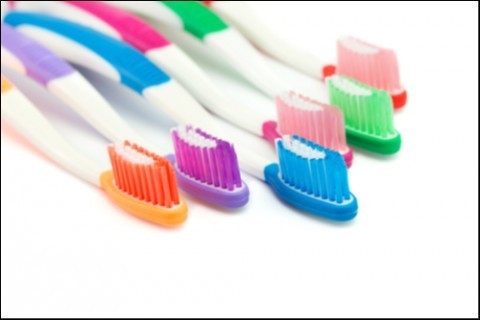 Two recent discoveries by researchers around the globe are yielding promising results for those suffering from chronic periodontitis. Periodontitis is a gum infection that if left untreated, damages both the soft tissue and bones surrounding the teeth- and can eventually lead to their loss. Periodontitis is also responsible for a variety of illnesses including heart disease, diabetes, dementia, rheumatoid arthritis, and even certain cancers. But now, universities in the US and Australia have released two unrelated studies that offer hope to those who suffer from chronic periodontitis. Dr. Gary Lederman of Bellmore, NY discusses these findings.
Two recent discoveries by researchers around the globe are yielding promising results for those suffering from chronic periodontitis. Periodontitis is a gum infection that if left untreated, damages both the soft tissue and bones surrounding the teeth- and can eventually lead to their loss. Periodontitis is also responsible for a variety of illnesses including heart disease, diabetes, dementia, rheumatoid arthritis, and even certain cancers. But now, universities in the US and Australia have released two unrelated studies that offer hope to those who suffer from chronic periodontitis. Dr. Gary Lederman of Bellmore, NY discusses these findings.
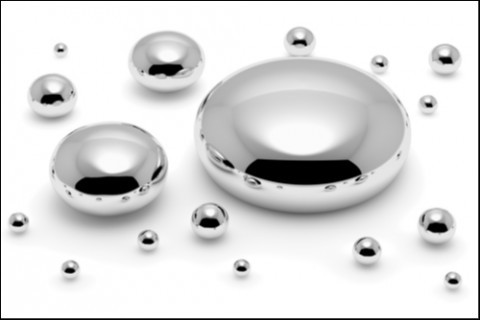 You may have noticed mercury fillings back in the news recently, following a recent study by the University of Georgia’s Department of Environmental Health. The study evaluated 15,000 patients and found that patients possessing 8 or more mercury amalgam fillings had 150% more mercury in their bloodstream than those with no amalgam fillings. While many dentists have switched over to resin composite fillings for health reasons, Dr. Lederman stopped using amalgam fillings over 20 years ago, long before anyone realized the full extent of the dangers of amalgams- but for completely different reasons.
You may have noticed mercury fillings back in the news recently, following a recent study by the University of Georgia’s Department of Environmental Health. The study evaluated 15,000 patients and found that patients possessing 8 or more mercury amalgam fillings had 150% more mercury in their bloodstream than those with no amalgam fillings. While many dentists have switched over to resin composite fillings for health reasons, Dr. Lederman stopped using amalgam fillings over 20 years ago, long before anyone realized the full extent of the dangers of amalgams- but for completely different reasons.
 A promising new study by the Columbia College of Dental Medicine at Columbia University is offering hope for the tens of millions of people around the world suffering from Temporomandibular Joint (TMJ) Disorder. In the study, researchers were successfully able to regenerate the cartilage within the temporomandibular joint using stem cells located within the jaw bone. Dr. Gary Lederman of Bellmore, NY is a neuromuscular dentist who specializes in the treatment of TMJ disorder. We spoke to him about the implications of this study, and what the findings could mean for patients living with TMJ disorder.
A promising new study by the Columbia College of Dental Medicine at Columbia University is offering hope for the tens of millions of people around the world suffering from Temporomandibular Joint (TMJ) Disorder. In the study, researchers were successfully able to regenerate the cartilage within the temporomandibular joint using stem cells located within the jaw bone. Dr. Gary Lederman of Bellmore, NY is a neuromuscular dentist who specializes in the treatment of TMJ disorder. We spoke to him about the implications of this study, and what the findings could mean for patients living with TMJ disorder.
The TMJ joints are the joints which anchor the lower jaw to the upper jaw, allowing the jaw to open, close, speak, and chew. If the temporomandibular joint becomes misaligned, it can become painful enough to restrict the movement of the jaw. This is known as TMJ disorder. Though there are many treatments for TMJ disorders, most only treat the symptoms of the disorder and not the cause. One successful method of treatment is neuromuscular dentistry, which while it does treat the cause, cannot currently heal the cartilage in the temporomandibular joint- in fact, until recently, nothing could. This is because the cartilage found in the TMJ is fibrocartilage, a type of cartilage also found in the vertebrae and knee meniscus that doctors long believed could not regrow or heal. In fact, damage to this cartilage is considered permanent- but the findings of this study have the potential to change everything.
Researchers discovered that when they took stem cells directly from the temporomandibular joint of a mouse, manipulated those cells, and transplanted them directly back into the fibrocartilage of the joint, the implanted stem cells spontaneously regrew damaged cartilage within the joint. Even more promising is that the cells used were the subject’s own cells. This is important because using donor stem cells has a lower rate of success because donor stem cells can often be rejected by the body- and even when they’re accepted, can introduce pathogens and increase the instance of tumors in the area of implantation.
The ability to regrow fibrocartilage offers hope for not just patients suffering from TMJ disorders, but patients with knee and spine injuries, and children suffering from juvenile idiopathic arthritis, a condition which often causes stunted growth in the jaw- and for which there is currently no treatment.
Though an actual stem cell treatment is not yet available to the public, Lederman is optimistic. "This type of stem cell treatment may be the missing piece of the puzzle between neuromuscular dentistry and eliminating TMJ pain entirely in some patients," Says Lederman. In the meantime, there is no need for patients to needlessly suffer through treating just the symptoms of their TMJ disorder. For those patients, Lederman suggests giving neuromuscular dentistry a try. "Neuromuscular dentistry can actually put the temporomandibular joint back into its optimal alignment by repositioning the jaw. This will eliminate pressure on the teeth, muscles, and joints, so they all work together harmoniously. By realigning the jaw, you can drastically reduce or even eliminate TMJ pain." While nobody knows how long it may be before the stem cell treatment is available – or if it will ever become a reality, "For now," says Lederman, "it offers hope. "
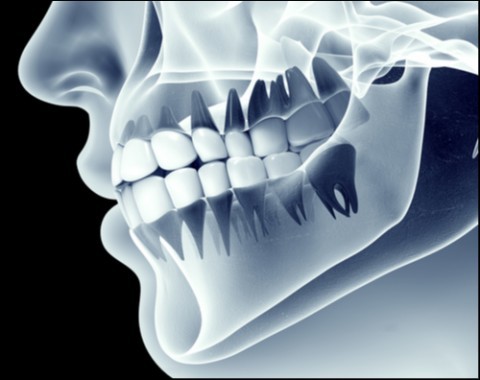 It’s no secret that pollution and environmental damage can have harmful effects on your health. You’ve probably seen news reports about how poor air quality can contribute to an increase in skin and lung cancers, among other things. But did you know that the environment can also be linked to chronic conditions like Temporomandibular Joint Dysfunction (TMJ) and sleep apnea? Dr. Gary Lederman discusses how something as simple as the air we breathe can have a huge impact on our bodies.
It’s no secret that pollution and environmental damage can have harmful effects on your health. You’ve probably seen news reports about how poor air quality can contribute to an increase in skin and lung cancers, among other things. But did you know that the environment can also be linked to chronic conditions like Temporomandibular Joint Dysfunction (TMJ) and sleep apnea? Dr. Gary Lederman discusses how something as simple as the air we breathe can have a huge impact on our bodies.
 If you’ve ever watched professional sports on TV, you’ve probably noticed athletes from a variety of different sports wearing mouth guards. But while mouthguards make sense in rougher sports like hockey, football, and boxing, did you know that athletes from every genre of sport can utilize the benefits of mouthguards? One such mouth guard- the Pure Power Mouthguard, is creating a lot of buzz in both the athletic and dental communities. We spoke to Dr. Gary Lederman of Bellmore, NY about this innovative technology.
If you’ve ever watched professional sports on TV, you’ve probably noticed athletes from a variety of different sports wearing mouth guards. But while mouthguards make sense in rougher sports like hockey, football, and boxing, did you know that athletes from every genre of sport can utilize the benefits of mouthguards? One such mouth guard- the Pure Power Mouthguard, is creating a lot of buzz in both the athletic and dental communities. We spoke to Dr. Gary Lederman of Bellmore, NY about this innovative technology.
Our bodies are complex systems that are interconnected in many ways. One part usually almost impacts another in some shape or form. Our mouths are no different, which is why the practice of neuromuscular dentistry can be quite beneficial, though it’s a fairly unknown form of dentistry. Dr. Lederman finds this type of dentistry has been the right fit for many of his patient’s suffering from mouth and jaw issues.
Many dental patients who wear dentures are not satisfied with the results because the shape and condition of their jaws can change due to bone loss and the loss or displacement of other teeth over time. But there is no excuse for tolerating the frustration of ill-fitting dentures. Dr. Gary Lederman is a dentist who specializes in helping patients with ill-fitting dentures upgrade to the new American Dental Association (ADA) standard of care – dental implants.
But dental implants are far more expensive than dentures, so aside from the fit, why upgrade? A dental patient wearing dentures –that fit well, mind you—exert approximately 50 psi of bite force, whereas dental implants can restore you to a full healthy bite force of 150 psi. This means that opting for dental implants can dramatically improve your quality of life by restoring your ability to indulge in more solid foods. Not only does this provide you with the ability to enjoy more foods and flavors; it allows you the opportunity to have better nutrition through food choices as well.
The other problem with dentures? When you lose an adult tooth, your tooth roots are not stimulated by the activity of chewing, and that lack of stimulation means that the root structure is no longer summoning the appropriate nutrients to maintain the place they occupy in your jaw, and your jaw actually begins to shrink through a process called osseointegation. The jawbone actually gets smaller to bring your remaining teeth closer together so that nature maintains your ability to chew with what you have left. This can result not only in functional degradation, but cosmetic deformation of your facial features as well.
When dental implants are placed, the oral surgeon inserts a titanium screw post into the jaw bone, and Dr. Lederman tops the post with a porcelain crown. The titanium posts embedded in the jaw actually fuse with the bone and prevent further bone loss. In fact, this fusion makes the dental implant and the the jawbone one, and maintains the full 150 psi bite force and the root stimulation for the areas the teeth have been lost.
To schedule a consultation to determine if dental implants are right for you, call our office at 516-882-1764.
For most people, going to the dentist is one of their least favorite things to do. In fact, that’s often why it gets pushed to the bottom of the priority list. But for some people, the anxiety they experience before and during a dental appointment can be debilitating and may even cause them to forgo dental treatment all together. Dr. Lederman wants his patient to have the most comfortable experience possible while undergoing dental treatments, which is why he offers sedation dentistry.
Sedation dentistry is a technique used to help patients relax during dental procedures or treatments. It helps ease anxiety associated with dental fear. Because stress can cause patients to become agitated and sometimes less cooperative, procedures can take longer to complete. When patients are in a more relaxed state, it helps expedite the process by eliminating resistance from the patient which in turn allows the dentist to work more quickly. Additionally, if more than one procedure is necessary, your dentist will be able to perform them in one sitting. Sedation dentistry allows patients to be more at ease, making the experience considerably more comfortable.
At our office, our sedation dentistry process doesn’t involve needles. We take a gentler and less invasive approach. Instead, patients take one pill approximately one hour before their visit. You aren’t unconscious but rather in a more relaxed state, making your appointment less stressful and much easier to manage.
If you’re nervous or anxious about your upcoming dental appointment, sedation dentistry might be right for you. Call our office today at 516-882-1764 to request sedation dentistry for you next appointment.
Often publications have shown how particular foods are bad for teeth because they introduce sugars and acids that promote the development of plaque and tooth decay. However, since 2005, researchers have been looking to cranberries and cranberry juice as a possible ally in the war on plaque, gum disease and tooth decay. Dr. Gary Lederman offers professional dental cleanings and restorations to help patients keep their smiles in tip top shape.
So what is magical about cranberries apart from other foods and juices that makes them good for your teeth? When eaten raw, the texture of the cranberry acts as a detergent food helping to brush sticky plaque forming bacteria away from teeth to be carried off by saliva as you chew. This property has also been found in apples, celery, and certain cheeses.
But what is most interesting about cranberries and sugarless cranberry juice is the way that researchers have found it inhibits the growth of oral biofilm containing the bacteria streptococcus mutans. Streptococcus mutans is the main ingredient in the formation of plaque. Additionally, chemicals in the cranberry juice also reduce inflammation and reduce the production of acids and restore the pH balance of the oral flora.
However, this does not mean that you should run straight to the grocery store and buy just any cranberry juice off the shelf. Most commercially produced cranberry juice is full of sugar and other additives that can cancel out the benefits of the cranberries. Scientists have been working since 2005 to find ways to isolate cranberry extracts for inclusion in tooth pastes and mouth wash.
To learn more or schedule your semiannual checkup, contact our office at 516-882-1764.
Dr. Lederman works to help his patients maintain their smile in some of the most minimally invasive ways possible. One such way is through biomimetic dentistry, a type of dentistry that promotes tooth conversation. One of the primary principles of biomimetic dentistry is maintaining and conserving natural tooth structure. By utilizing minimally invasive techniques that treat weak and decayed teeth, dentists are able to strengthen and seal effected teeth and preserve their natural integrity.
Biomimetic loosely translates to “mimicking nature.” The goal of this type of dentistry is to preserve as much of the natural tooth as possible. Oftentimes, traditional dentistry requires dentists to compromise the healthy tooth structure to successfully restore it. In contrast, biomimetic dentistry aims to minimize this by only replacing that part of the tooth that is damaged.
Once a tooth has been structurally compromised, such as being prepped for a crown, it often requires additional work which further chips away at the natural tooth. Ironically, while a crown is meant to protect and strengthen the tooth, it can have the opposite effect. For a tooth needing a crown, a biomimetic dentistry approach only removes the damaged part of the tooth. The final restoration, often called an inlay or onlay, is safely bonded to the natural tooth. In fact, using a biomimetic approach can actually preserve a tooth that might otherwise require extraction.
Biomimetic dentistry is a great way to preserve the appearance of your smile while also maintaining the look, structure and strength of your natural tooth. Contact our office at 516-882-1764 to learn more.



